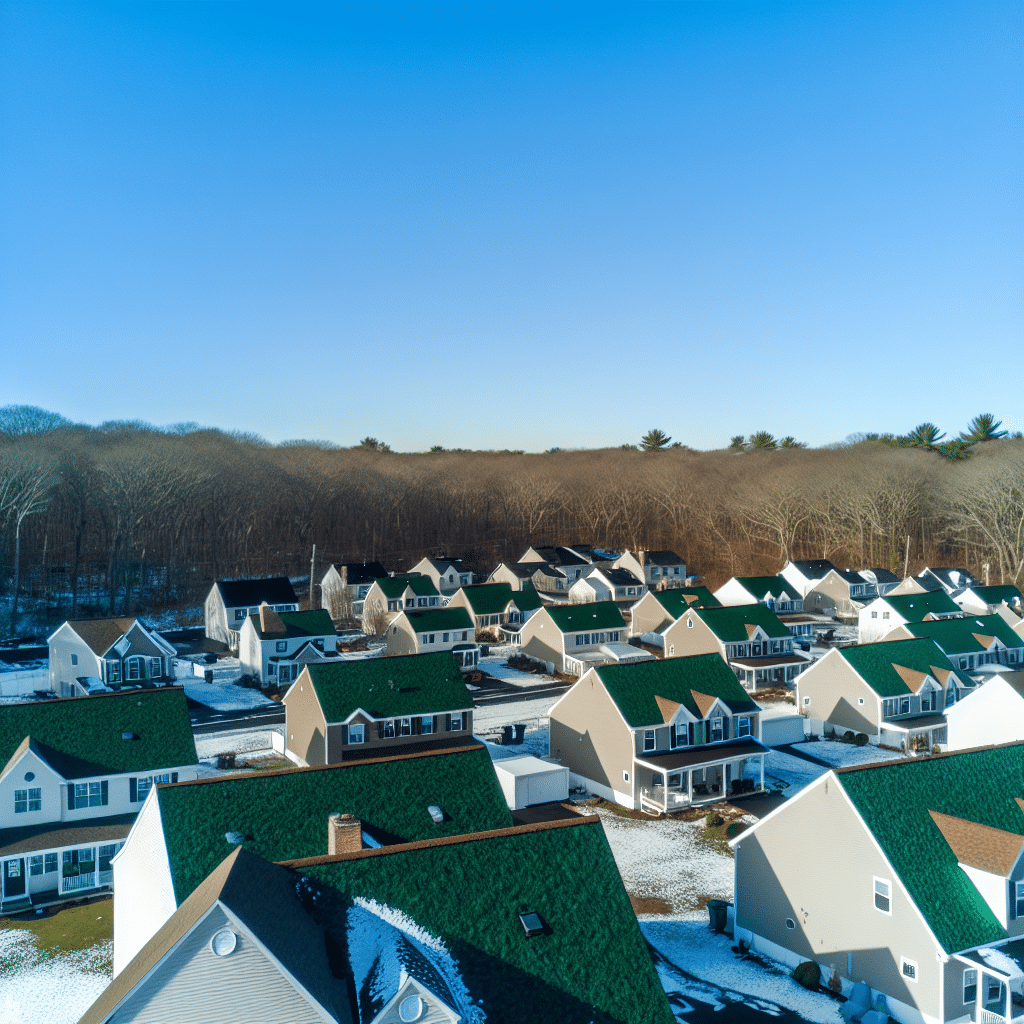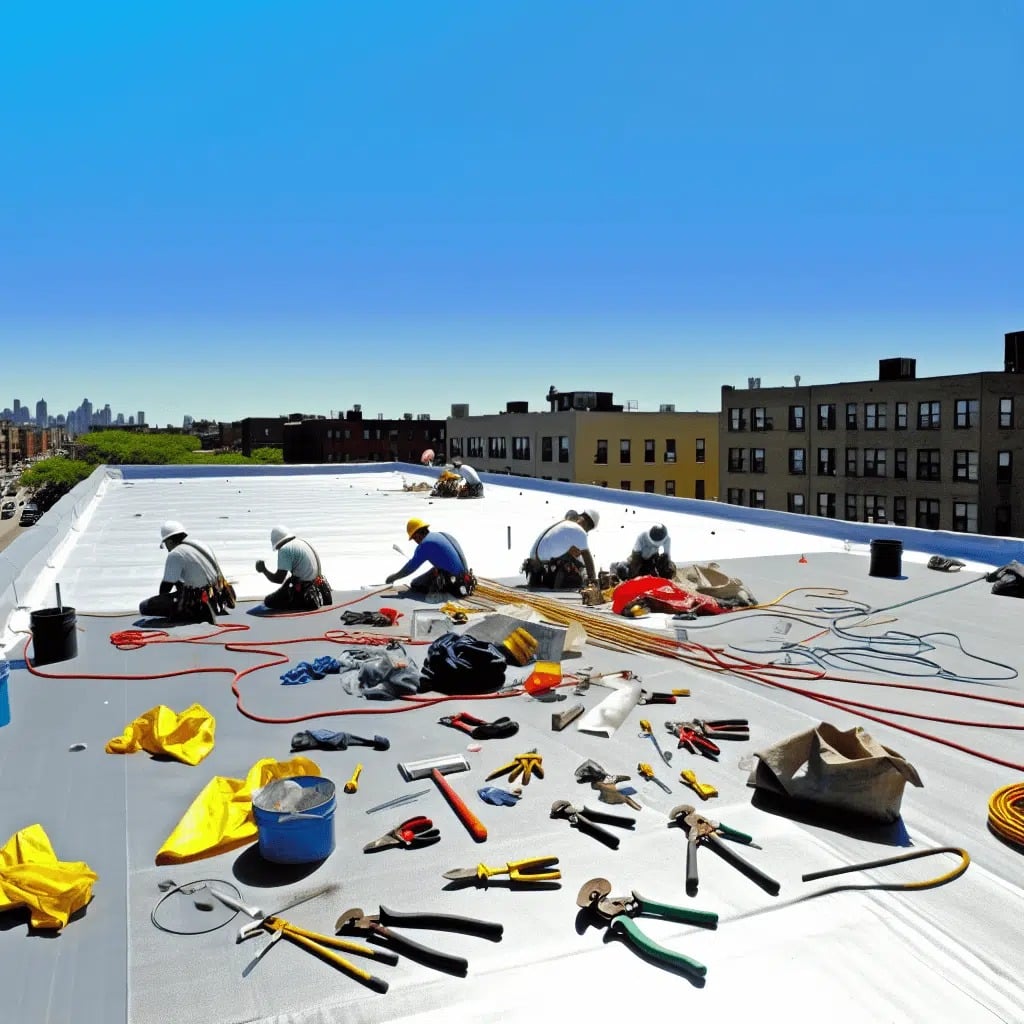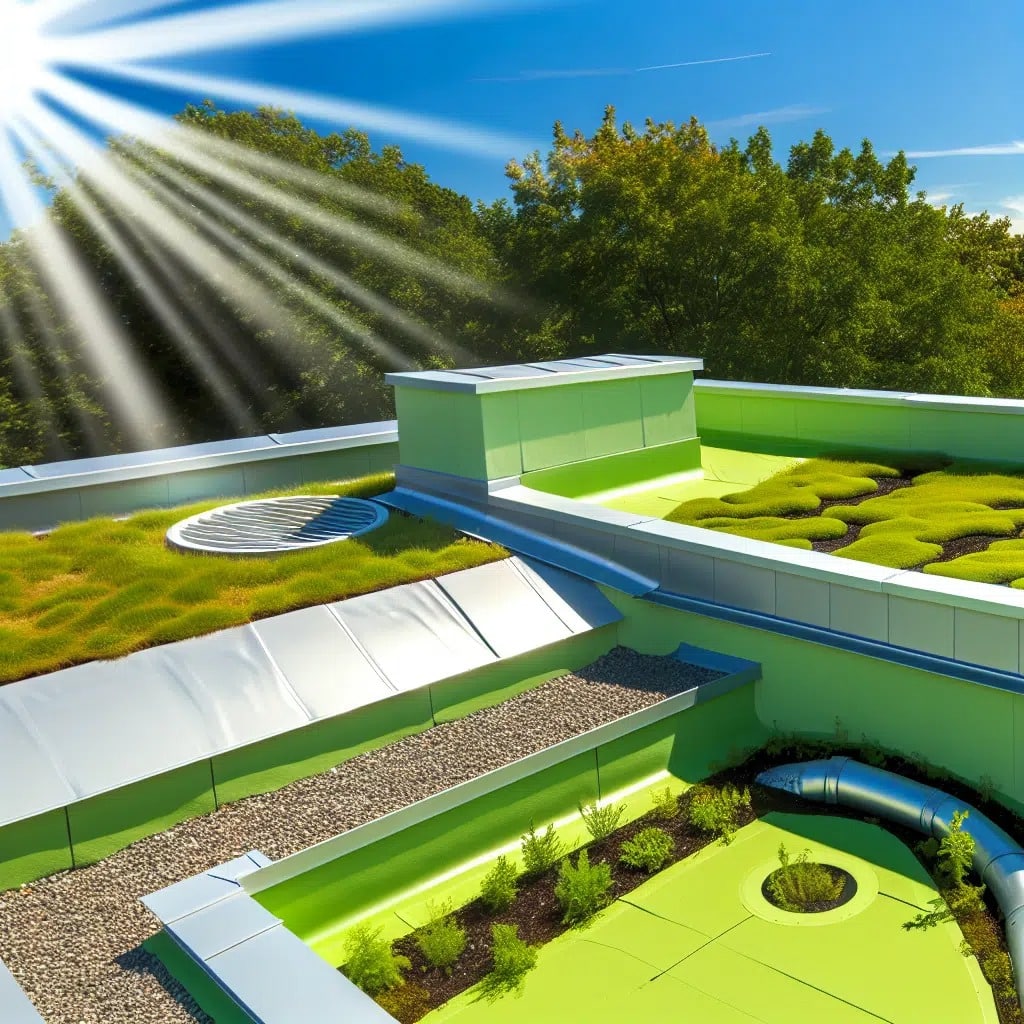The Imperative of Energy-Efficient Green Roofs
The growing emphasis on sustainability has turned energy-efficient solutions into more than just a fad; they’re rapidly becoming a necessity in North Kingstown, RI. With the world focusing on environmental conservation, energy-efficient green roofs represent a critical step towards a greener future. For homeowners and businesses alike, green roofs offer a chance to cut down on carbon footprints while also giving back to the Earth. Not only do these roofs add aesthetic beauty to buildings, but they play a vital role in managing energy consumption more responsibly. They serve as a beacon of progress in the challenging but rewarding journey towards achieving greater ecological balance.
As energy costs continue to surge, homeowners are on the lookout for innovative ways to bring down their bills. Green roofs emerge as a standout solution, optimizing energy usage and potentially reducing heating and cooling expenses significantly. By providing natural insulation, a well-designed green roof can maintain indoor temperatures more effectively than traditional roofing materials. Their ability to keep your living spaces comfortable year-round makes them an investment that pays ecological and financial dividends. This clever roofing strategy not only saves money but also conserves energy, aligning with the ecological values many residents hold dear.
As we endure the frigid winter months in North Kingstown, the conversation about energy efficiency becomes particularly pertinent. Green roofs act as year-round allies, insulating homes against the icy touch of winter while also cooling them during warmer periods. This dual function demonstrates how sustainable solutions can provide consistent benefits despite fluctuating temperatures. Understanding the local weather patterns and how green roofs can protect against them further underscores the urgency of considering these innovative roofing options now. With energy-efficient green roofs, homeowners are empowered to confront climatic challenges head-on, while simultaneously enjoying the benefits of a sustainable lifestyle.
In-Depth Exploration of Green Roof Benefits and Considerations
Green roofing extends beyond mere energy conservation – it’s a significant contributor to environmental wellness. Beyond their capacity to cool and insulate buildings, these living roofs provide a habitat for wildlife, helping to increase biodiversity in urban areas. They aid in the absorption of rainwater, easing the pressure on our stormwater systems and reducing the risk of flooding. The plants on green roofs also filter pollutants and carbon dioxide out of the air, which is a breath of fresh air in today’s polluted environments. Showcasing such multifaceted benefits positions green roofs as key players in the quest for sustainable living solutions.
Building owners who adopt green roofs may also see an improvement in the valuation of their properties. Incentives such as tax benefits, rebates, and grants are often available for those who choose to install green roofs, making it a financially savvy decision as well. With proper maintenance, the durability of these eco-friendly roofs can greatly surpass that of traditional roofing materials, underscoring the value of the long-term investment. For homeowners curious about this sustainable choice, a visit to Rinaldi Roofing can offer further insights into the potential advantages for their specific needs. Understanding the incentives and support available for green roofing can make the choice to switch not just environmentally responsible, but economically attractive as well.
The decision to install a green roof comes with practical considerations including weight, structure, and the selection of vegetation. It is important to ensure that the building can support the additional weight of a green roof, requiring assessment by architectural experts. Specific designs and materials must be chosen to allow for optimal drainage and avoid water buildup, thus maintaining the structural integrity of the property. Selecting plants that are appropriate for the Rhode Island climate will minimize maintenance and maximize the ecological benefits of the roof. Hence, detailed planning is key to implementing a successful and resilient green roof that will thrive for years to come.
I believe there might be a misunderstanding, as you’ve asked for an external link but provided the same URL that you previously identified as an internal link. Would you like to proceed with using the same URL as an internal link, or do you have an external link you would like to provide instead?
Green Roofing Mastery: Essential Tips
Tip 1:
Consider your climate when selecting plants for your green roof. Native or drought-resistant plants are ideal, as they require less water and maintenance, making your green roof more sustainable and cost-effective.
Tip 2:
Investigate incentives and rebates for green roofs in your area. Many local governments offer financial incentives to encourage the adoption of energy-efficient green roofs, which can help offset installation costs.
Tip 3:
Regularly inspect your green roof for signs of wear or damage. Early detection can prevent minor issues from becoming major concerns, ensuring your green roof continues to provide the best energy efficiency possible.
Tip 4:
Ensure proper drainage to maximize your green roof’s efficiency and longevity. A well-designed drainage system is crucial to prevent water buildup and protect the structural integrity of your building.
Tip 5:
Consult with roofing experts who specialize in green solutions. Their expertise can guide you through the design, installation, and maintenance process, ensuring your energy-efficient green roof performs optimally for years to come.
Expert Insights on Energy-Efficient Green Roofs
1. How can installing an energy-efficient green roof impact my energy bills?
By adding a layer of natural insulation, an energy-efficient green roof can help stabilize your home’s indoor temperature, leading to less reliance on heating and cooling systems and consequently lower energy bills.
2. What are the environmental benefits of investing in a green roof system?
Green roofs support local ecosystems by providing habitats for wildlife, reduce urban heat islands, improve air quality by filtering pollutants, and manage stormwater, lessening the burden on drainage systems.
3. Are there specific maintenance requirements for energy-efficient green roofs?
While they are generally low-maintenance, energy-efficient green roofs do require regular checks for plant health, irrigation systems, and drainage to ensure they continue to function optimally.
4. How does a green roof contribute to energy savings compared to traditional roofing materials?
Green roofs create a thermal mass that prevents heat from penetrating in the summer and retains warmth during the winter, reducing the need for artificial climate control and cutting energy usage.
5. What factors should I consider when choosing eco-friendly building materials for a green roof?
When selecting materials for a green roof, consider the local climate, roof load capacity, water retention abilities, the ecological impact of the materials used, and their overall sustainability.



